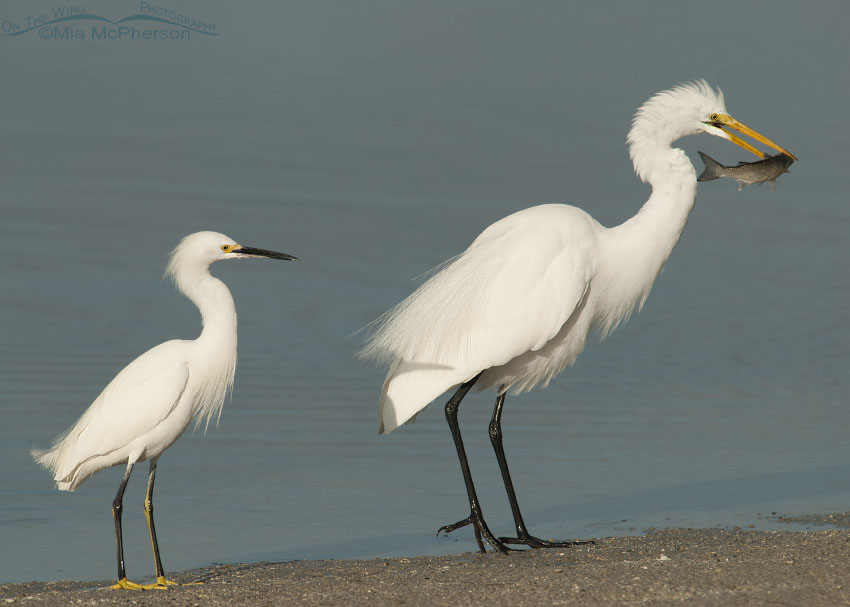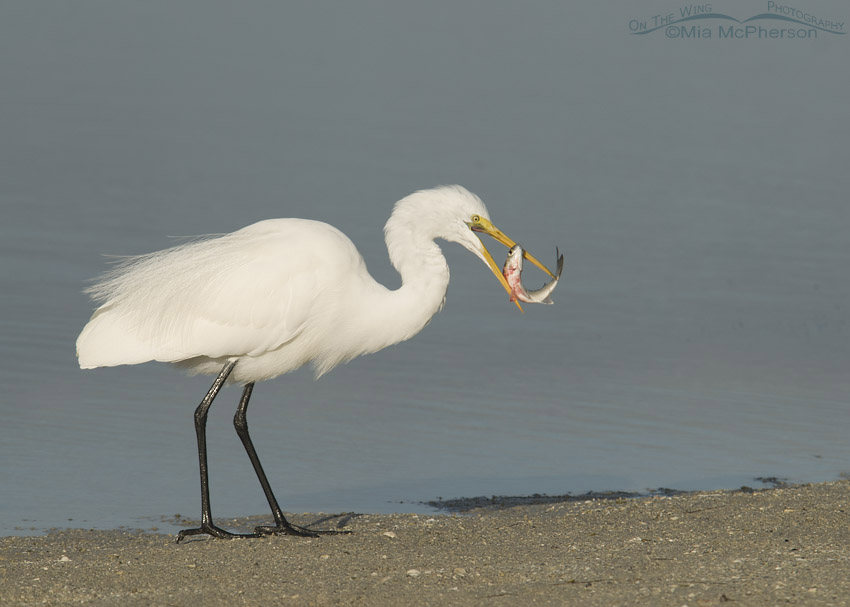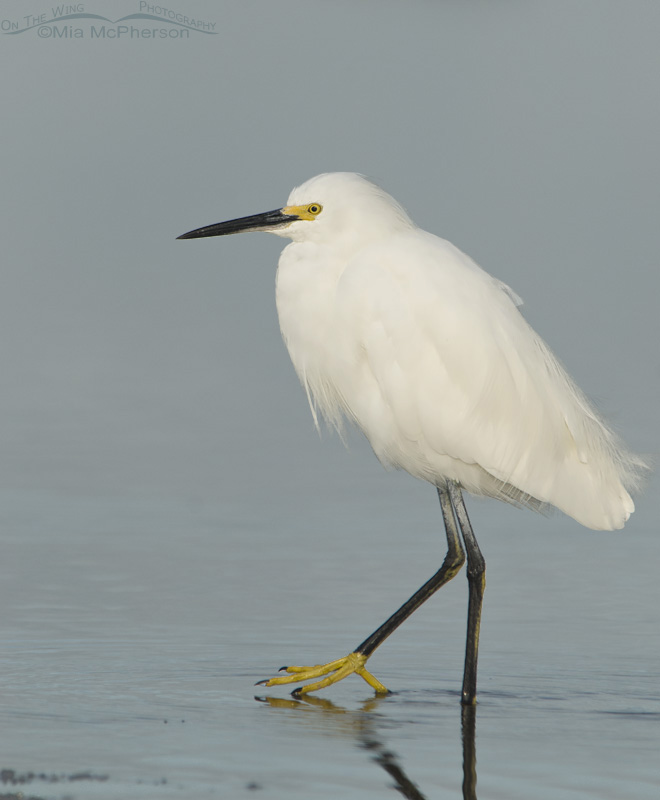Size and Appearance Comparison
 Snowy Egret – Great Egret size comparison – Nikon D200, handheld, f7.1, 1/1000, ISO 160, Nikkor 80-400mm VR at 360mm, natural light
Snowy Egret – Great Egret size comparison – Nikon D200, handheld, f7.1, 1/1000, ISO 160, Nikkor 80-400mm VR at 360mm, natural light
I’m frequently asked for help with bird identification via email, private messages, in the field and I also belong to several bird identification groups of Facebook where I enjoy helping people figure out what birds they are seeing and sharing.
Quite often I see confusion about whether a large, white wading bird is a Great Egret or a Snowy Egret so this morning I thought I’d share a Great and Snowy Egret photo I took precisely nine years ago today that might help with size and appearance differences of these two wading birds.
First let me say that guessing the size of birds in the field isn’t always reliable but in the case of the photo above the birds are close together so size comparison is easier.
Great Egrets are larger than Snowy Egrets by about 15 inches. Great Egrets are approximately 39 inches in length compared to Snowy Egrets at 24 inches. Great Egrets are about 1.9 pounds where Snowy Egrets weigh in at about 13 ounces. This photo doesn’t show the wing span of either egret but the wing span of Great Egrets is about 51 inches and Snowy Egrets are 36 inches. So there are definitely size differences between the two species but as I mentioned that might not always be easily discernible in the field. There are visible differences though in the legs, feet, bills, lores, and plumage that do help to identify these two wading birds.
 Great Egret trying to eat a Mullet – Nikon D200, handheld, f7.1, 1/1000, ISO 160, Nikkor 80-400mm VR at 310mm, natural light
Great Egret trying to eat a Mullet – Nikon D200, handheld, f7.1, 1/1000, ISO 160, Nikkor 80-400mm VR at 310mm, natural light
Great Egrets have long black legs and feet. During the nonbreeding season both the maxilla (upper mandible) and mandible (lower mandible) are yellow and during the breeding season the maxilla can be much darker, almost black, while the mandible remains primarily yellow but can look orange-yellow. The lores, the space between the bill and the forward edges of the eyes, are yellow during the nonbreeding season and during the breeding season their lores become a bright lime green. I’ve even seen the lores look almost turquoise blue so there is some color variation of their lores. During the breeding season Great Egrets develop long plumes that are visible on their backs and over their tails but not on their heads.
By the way, their common name is simply Great Egret, I bite my tongue often because I see people call them “Great White Egret” which is not their correct common name.
 Snowy Egret with Golden Slipper showing – Nikon D200, handheld, f7.1, 1/800, ISO 160, Nikkor 80-400mm VR at 360mm, natural light
Snowy Egret with Golden Slipper showing – Nikon D200, handheld, f7.1, 1/800, ISO 160, Nikkor 80-400mm VR at 360mm, natural light
Snowy Egrets have long dark legs which can have some yellow and grays in the length of them. Their feet are yellow and are often called “Golden Slippers”, the feet of Great Egrets do not show yellow at all. The bills of Snowy Egrets are basically black although in the nonbreeding season some gray does show on the lower mandible close to their faces and that gets darker during the breeding season. The lores of Snowy Egrets during the nonbreeding season are a bright lemony yellow. During the breeding season their lores become pink to salmon colored. Also during the breeding season Snowy Egrets develop lacy plumes on their scapulars and unlike Great Egrets they also develop lacy plumage on their necks and heads which then appear to be crests.
There are some other differences between Great and Snowy Egrets in appearance of course but I think the comparisons I have written about are the most helpful for me in the field for identification and may be for other people too.
Life is good.
Mia
Click here to see more of my Great Egret photos and here for my Snowy Egret images. All photos were taken at Fort De Soto County Park.


Outstanding! Love the comparison between the two egrets; the images are terrific. What a treasure! Thanks Mia.
Really interesting — thanks, Mia! Such great shots too. 🙂
Thanks for this lovely lesson. I’m good now on the learning-something-new-every-day thing now 😉
Interesting and so beautiful – as always!
I didn’t fealize that the differences between these two birds were so many or so striking…this posting was very informative and very interesting…plus great shots of the birds, too.
AB photos, Mia
Thank you for this. I knew the Snowy Egrets were smaller but didn’t realize how much smaller than the Great Egrets.